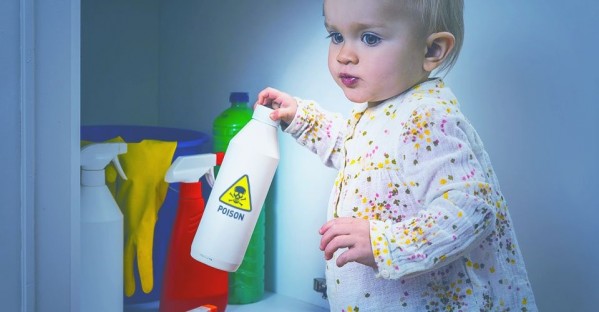PAEDIATRIC EMERGENCY CARE FOR INGESTED POISONING
March 30, 2020 at 3:20 PM

A scary moment that far too many parents know: seeing their child on the verge of swallowing something poisonous or, even more frightening, right after the child has already done so. Today’s post looks at the emergency care steps to take in an ingested poisoning incident.
By far, poisoning most often occurs by ingestion. Children under six years old account for over half of all poisonings. Most poisoning deaths in children are accidental, while most poisoning deaths in adults are intentional. Common ingested poisons include pain medications, personal care products, and household cleaning products.
Safety latches on drawers or cabinets, and child-resistant caps on bottles, are helpful in keeping poisons out of the hands of children. However, they are not “childproof” and do not substitute for careful and constant supervision.
The effects of ingested poisons are wide-ranging and often resemble those of common illnesses. Abdominal pain or cramping, nausea, and vomiting may occur. A child may also have an altered mental status. Upon questioning, the ingestion may be described by the child. Open and empty containers, unusual smells, and odd staining on clothes, skin, or lips may be present.
If it is suspected that a child has ingested something poisonous, act quickly. Activate the Emergency Medical Services (EMS) by ringing 111 if the child is displaying any serious signs or symptoms.
In New Zealand, the National Poisons Centre at 0800 764766 (0800 POISON) is also available to quickly provide you with information regarding the immediate treatment of any substance.
Help EMS providers and the poison centre by clearly identifying the substance and providing details about the incident. Save any vomit, bottles, or containers for EMS.
Do not induce vomiting, or give water, milk, or activated charcoal to the child unless advised to do so by the poison control centre or EMS.
Keep the child still. Calm, comfort, and reassure. Reassess the child regularly until another provider or EMS personnel take over
Need to take an emergency care class? Get started today during the Covid-19 lock down by enrolling into our online blended workplace program.
Complete the theory now at home during the lockdown then attend our practical skills session when we get the all clear from the Government to complete your training.
Full course 2 hours online, 6 hours in class.
Refresher courses 2 hours online, 4 hours in class. Must have a certificate dated within 2 years and 5 months at time online portion is commenced.
Blog source:
![]()



